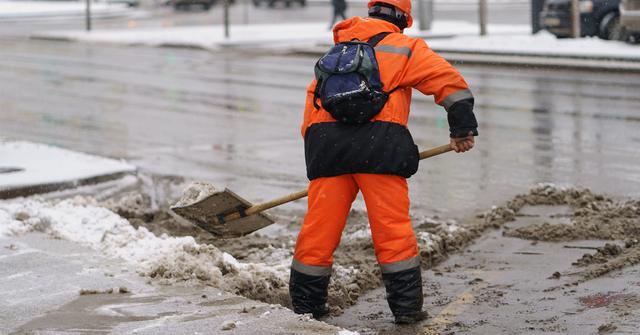Snows and freezing temperatures remind everyone winter is approaching
A blanket of snow reminded residents of North Central Ohio this week that winter's arrival is upon us.
Falling temperatures and frozen precipitation too often mean house fires, traffic wrecks and emergency room visits — all of which could have been prevented.
More:As cool weather stunts grass, brush growth, hemlock is easier to find and kill
The health department urges everyone to keep snow-removal items stocked, including rock salt to melt ice, sand to improve vehicle traction and shovels or blowers to remove snow.
"Winterize your home to extend the life of your fuel supply by insulating walls and attics, caulking and weather-stripping doors and windows and installing storm windows or covering windows with plastic," Richmond said.
Having extra clothing, bottled water and shelf-stable foods on hand will make any prolonged power outages a little more bearable, and safe.
Tips for safe winter driving
Traveling in winter means drivers are likely to encounter freezing rain, sleet or even blizzards, according to Sgt. Brice Nihiser, a public information officer for the Ohio Highway Patrol.
Drivers should check now to make sure they have adequate tread on their tires, which should be inflated to the correct pressure.
Many times in his career, the chief has discovered fires that were started by extension cords or outlets that had too many items plugged into them.
"We even see entire entertainment centers that are plugged into a little brown extension cord and they melt down," Thompson said. "The little brown extension cords are designed for one lamp, that’s it."
Heaters, run only while supervised, should be plugged directly into a wall outlet.
House numbers should be visible
House numbers are an important tool for emergency personnel that the average person never even considers during their average day. For some this winter, they will be a matter of life or death.
"Visible house numbers is very important," Thompson said. "I tell people if they don't care about fire and police, they will at least care about Amazon and pizza."

He challenges everyone to drive through any town and look at the variations of house numbers on display: they are on the mailbox, near the front door, or even atop the garage.
More:Omicron variant not yet found in Ohio, but doctors are looking for new COVID-19 strain
"Just pretend you're in a squad and look for the numbers," Thompson said. "They're all different shapes and sizes."
His favorites are the large, reflective house numbers. He said as long as they are displayed prominently and are free of visible obstructions, it doesn't matter where they are hung.
Anyone who shovels snow from their driveway should be sure to keep both their house numbers and fire hydrants uncovered during the process.
Avoid heart attacks and hypothermia
Working, playing and exercising outdoors during the winter come with a set of risks very different from summer.
One of the least-considered is the strain the heavy snow and clothing can put on a person's cardiovascular system.
"If you have heart disease or high blood pressure, follow your doctor's advice about shoveling snow or performing other hard work in the cold," Richmond said. "Otherwise, if you have to do heavy outdoor chores, dress warmly and work slowly. Remember, your body is already working hard just to stay warm, so don't overdo it."
More:Come Home to Galion event on Saturday includes a full lineup of holiday favorites
There are many other winter concerns, like slipping on ice and causing serious injury, or even decreased body temperature due to wind chill.
The most severe temperature-induced injury is hypothermia. Symptoms for adults include shivering, exhaustion, confusion, fumbling hands, memory loss, slurred speech and drowsiness. For infants the symptoms are bright red color, cold skin and very low energy.
"If you notice any of these signs, take the person's temperature," Richmond said. "If it is below 95, the situation is an emergency — get medical attention immediately."
The patient should be warmed immediately, and any wet clothing should be removed.
Frostbite is the less severe, but more common. Victims of frostbite rarely know because their skin tissue has become numbed, so they don't feel the pain.
More:Federal judges halt Biden's COVID-19 vaccine mandate for federal contractors, health care workers in Ohio
The condition most commonly affects the nose, ears, cheeks, chin, fingers or toes. It begins as redness, then worsens to a white or grayish-yellow skin area, skin that feels unusually firm or waxy, or numbness.
"Frostbite can permanently damage the body, and severe cases can lead to amputation," Richmond said. "The risk of frostbite is increased in people with reduced blood circulation and among people who are not dressed properly for extremely cold temperatures."
ztuggle@gannett.com
419-564-3508
Twitter: @zachtuggle







